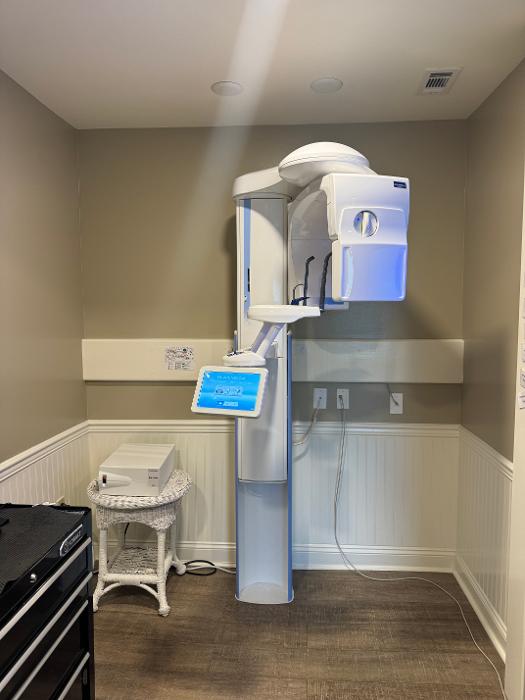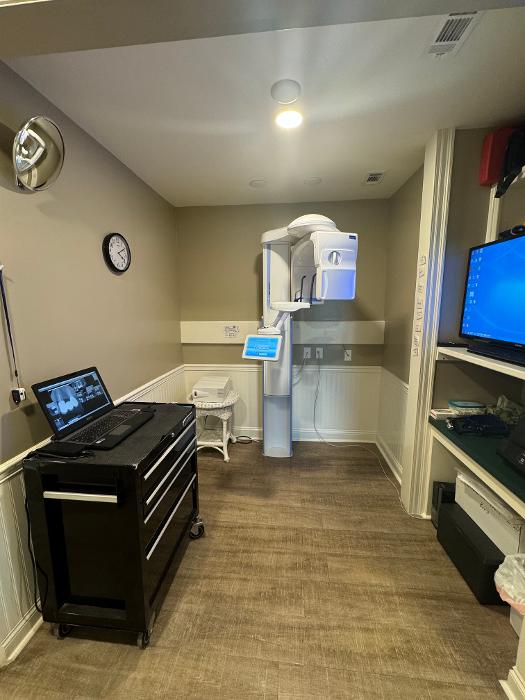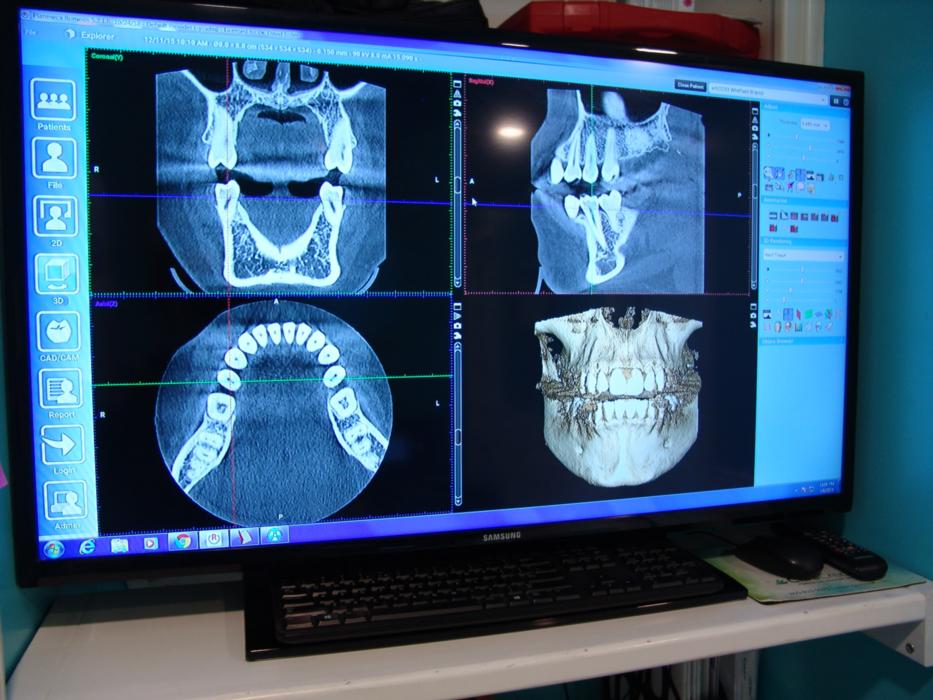3D Scanning & X-Rays
What are Dental X-rays:
Dental X-rays, also known as dental radiographs, are images of your teeth and surrounding structures that dentists use to evaluate your oral health. These X-rays are crucial for detecting dental problems that are not visible during a regular dental examination. They can reveal issues such as cavities between teeth, bone loss, infections, and abnormalities in tooth roots.
Types of Dental X-rays at our office:
- Bitewing X-rays: These X-rays show the upper and lower back teeth and are used to detect decay between teeth and bone level changes caused by gum disease.
- Periapical X-rays: These show the entire tooth from the crown to the root and the supporting bone structure. They are used to detect abnormalities such as abscesses and changes in the root structure.
- Panoramic X-rays: This type of X-ray provides a broad view of the entire mouth, including all teeth, jaws, and surrounding structures. It is useful for evaluating impacted teeth, jaw disorders, and overall dental development.
- Cone Beam Computed Tomography (CBCT): CBCT provides a three-dimensional view of the teeth, bone, nerves, and soft tissues in the mouth. It is often used for more complex treatments like dental implants and orthodontics.
Benefits of Dental X-rays:
- Early Detection of Dental Problems: X-rays can reveal dental issues such as cavities, decay, and infections in their early stages, allowing for timely treatment and preventing more extensive damage.
- Evaluation of Tooth and Bone Health: They help dentists assess the health of tooth roots, bone structure, and the surrounding tissues. This is essential for detecting bone loss, gum disease, and abnormalities that may affect oral health.
- Guidance for Treatment Planning: X-rays provide detailed information that aids in planning and monitoring treatments such as fillings, crowns, implants, and orthodontics. They help ensure that treatments are accurately targeted and effective.
- Diagnosis of Hidden Problems: Some dental issues, like impacted teeth, cysts, tumors, and developmental abnormalities, can only be detected through X-rays. Early identification of these problems can prevent complications and improve treatment outcomes.
- Patient Education: X-rays allow dentists to visually explain dental conditions to patients, helping them understand the necessity and urgency of recommended treatments. This improves patient engagement and compliance with oral health care.
- Enhanced Safety and Accuracy: Modern digital X-ray technology reduces radiation exposure compared to traditional X-rays. It also provides instant images, enhancing diagnostic accuracy and reducing the need for retakes.
- Monitoring Oral Health Changes: Regular X-rays enable dentists to monitor changes in oral health over time, identifying trends or emerging issues that may require attention.


This allows us to see your teeth and jaw in cross-sections which enables us to identify infections and abnormalities that can not be seen on conventional X-Rays.

